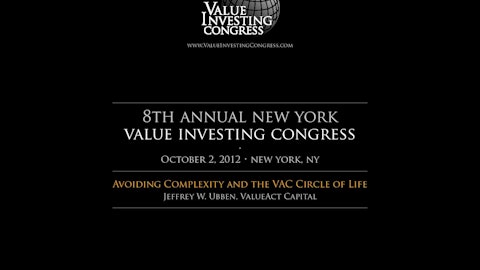Last week ended with some pretty interesting news from the UK, where activist investor ValueAct Capital disclosed a 5.44% stake in engine maker Rolls-Royce Holding PLC (LON:RR). After the company reported the position in a regulatory filing, the stock jumped by 6%, as other investors got excited about the company’s prospects. It’s easy to understand the hype around the stock, since Jeff Ubben, the manager of ValueAct, has a great track record of successful activist campaigns.

Therefore, one of the main questions that arises after the announcement about ValueAct’s 5.44% stake, is what the investor plans to do about the company? Rolls-Royce Holding PLC (LON:RR), which builds engines for airplanes, trains and ship, has downgraded its guidance for the next two years, to reflect weaknesses in the civil aerospace and marine markets. In this way, the company currently expects profit before tax between £1.33 billion ($2.07 billion) to £1.48 billion ($2.31 billion), versus the prior guidance of £1.40 billion ($2.18 billion) to £1.55 billion ($2.42 billion). Moreover, a month ago, the company appointed a new CEO, Warren East, who said that he would conduct a review of the company in order to make it a less complex business. East is expected to present the results of his review by the end of the year.
Follow Mason Morfit's ValueAct Capital
In this way, where does ValueAct stand? Activist investors most often try to push for a sale of the company or a spin-off of some assets and in the Rolls-Royce’s case the general opinion is that the company might soon be heading for a split. From one point, it makes sense. Most likely, Mr. Ubben will push for a split of Rolls Royce’ jet engine business. It’s more profitable than the other segments in which the company operates. In its results for the first six months of 2015, Rolls-Royce posted consolidated revenue of £6.3 billion ($9.8 billion), down by 4% on the year. However, the aerospace segment had a 2% annual increase in revenue to £4.3 billion ($6.7 billion). In addition, the aerospace segment had a profit before tax of around £432 million ($674.5 million), and even though it was down by 27% on the year, it was slightly below the group’s profit of £439 million ($685.4 million).
If ValueAct pushes for a separation of the aerospace segment, it is not likely that the business will be sold to another entity. The only company that might have the potential to acquire it is General Electric Company (NYSE:GE), which has its own segment for making engines for wide body jets. However, a deal between Rolls-Royce and General Electric cannot be signed due to regulatory issues. Sequoia Capital, another shareholder of Rolls-Royce, said in its letter to investors for the fourth quarter of 2014:
“Rolls shares a duopoly with General Electric Company (NYSE:GE) in wide body engines and the barriers to entry for any newcomer would be formidable. Not only is the business intensely regulated, but a new player selling jet engines without an installed base of profitable service contracts likely would lose billions of dollars to capture market share from GE and Rolls.”

